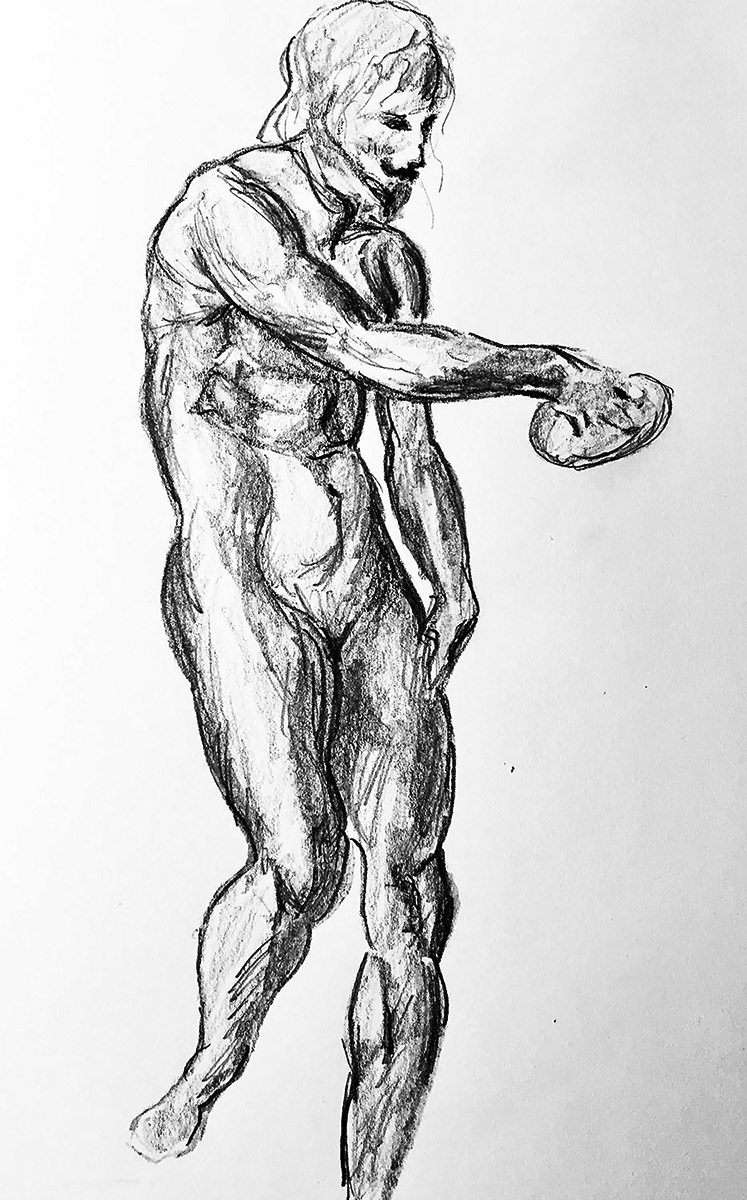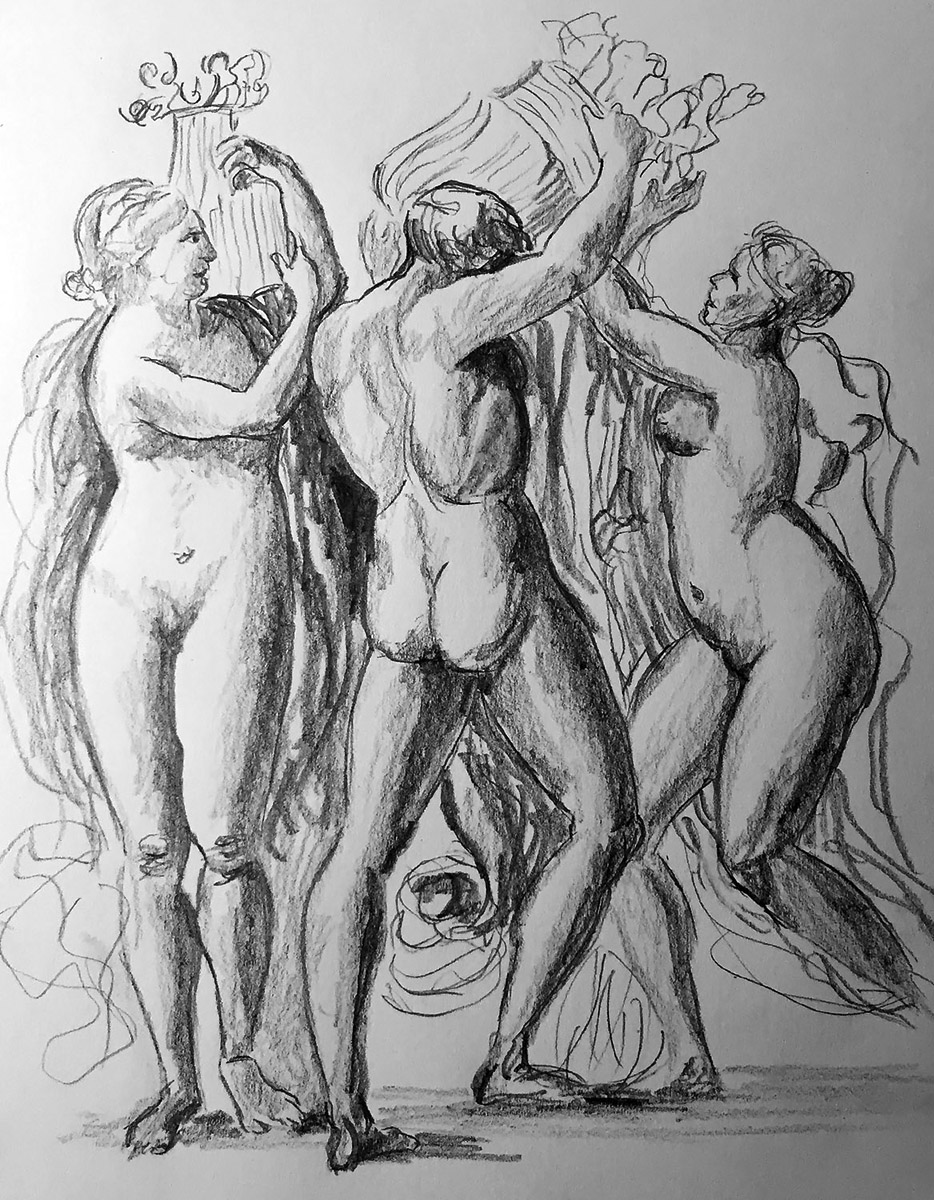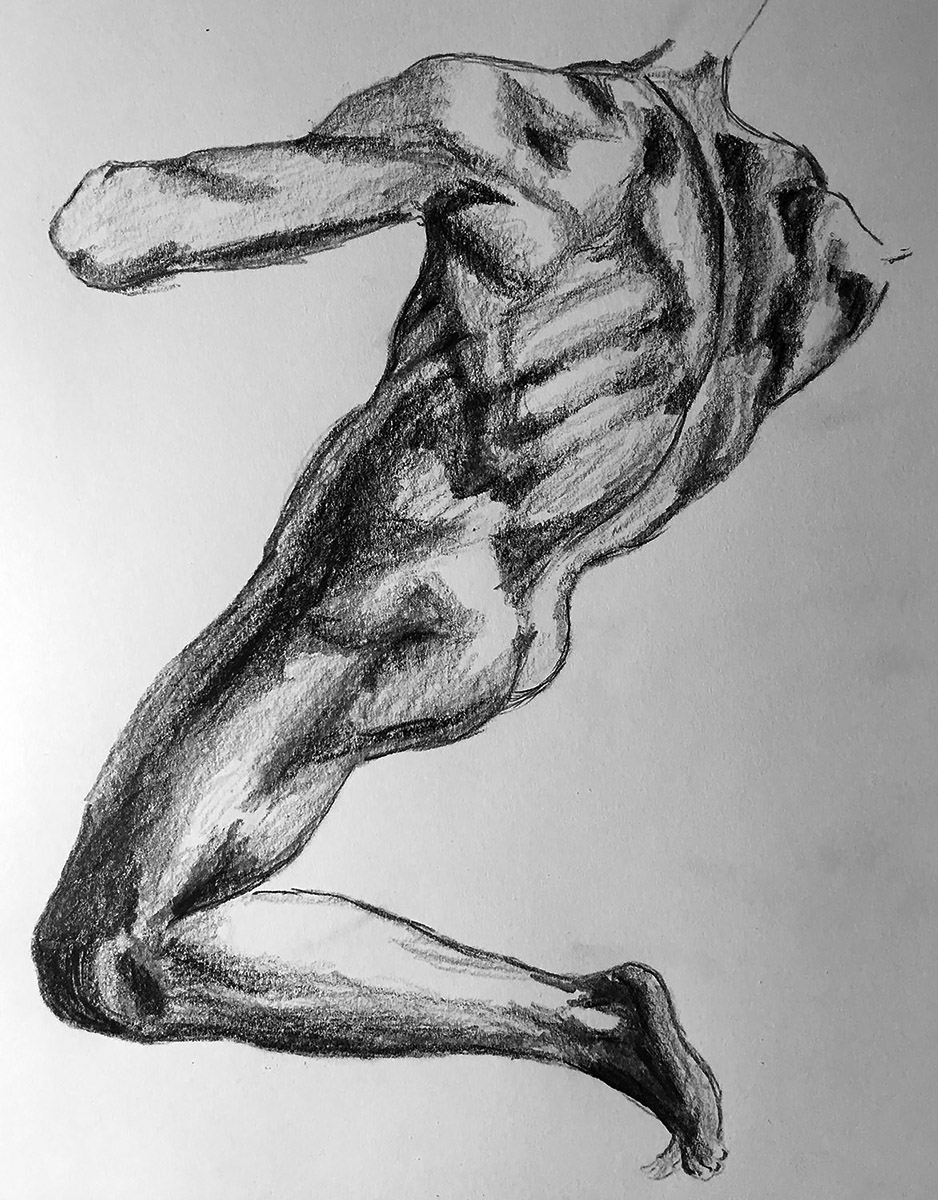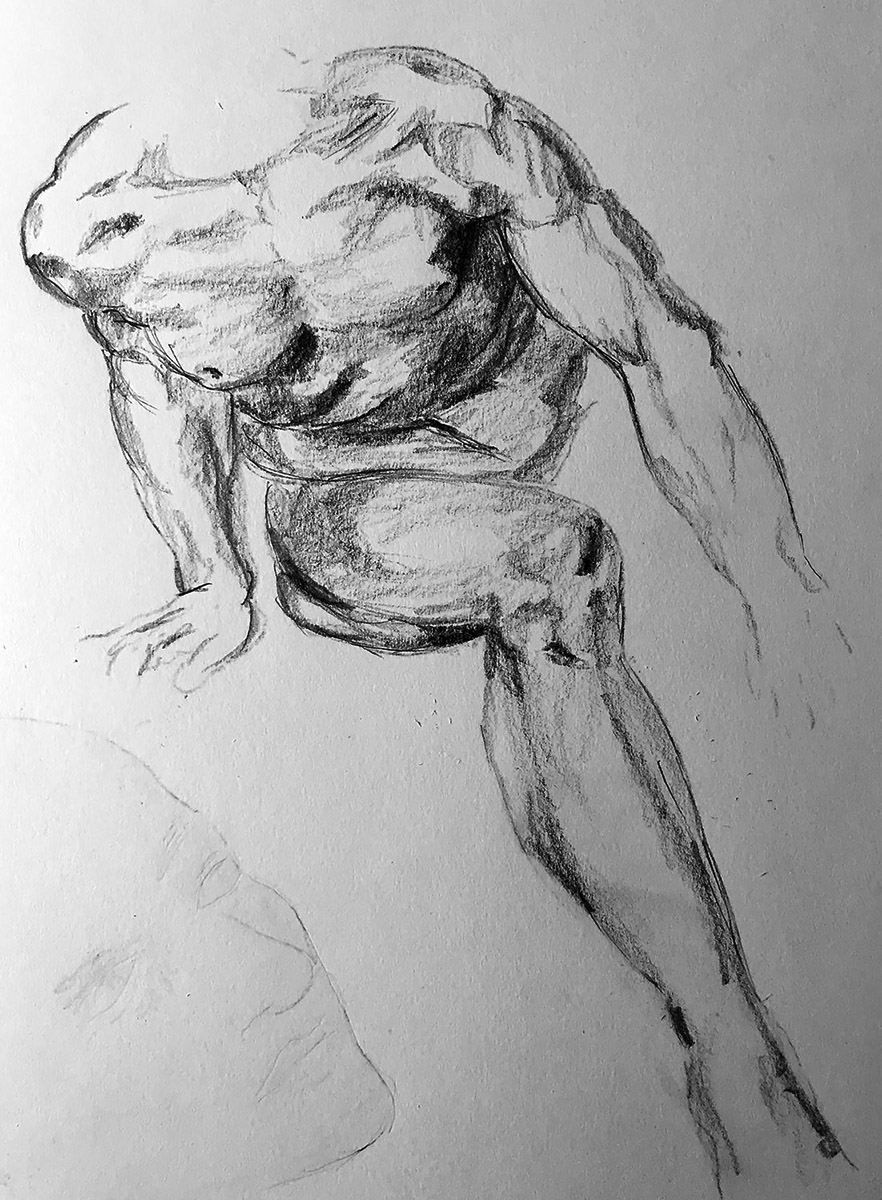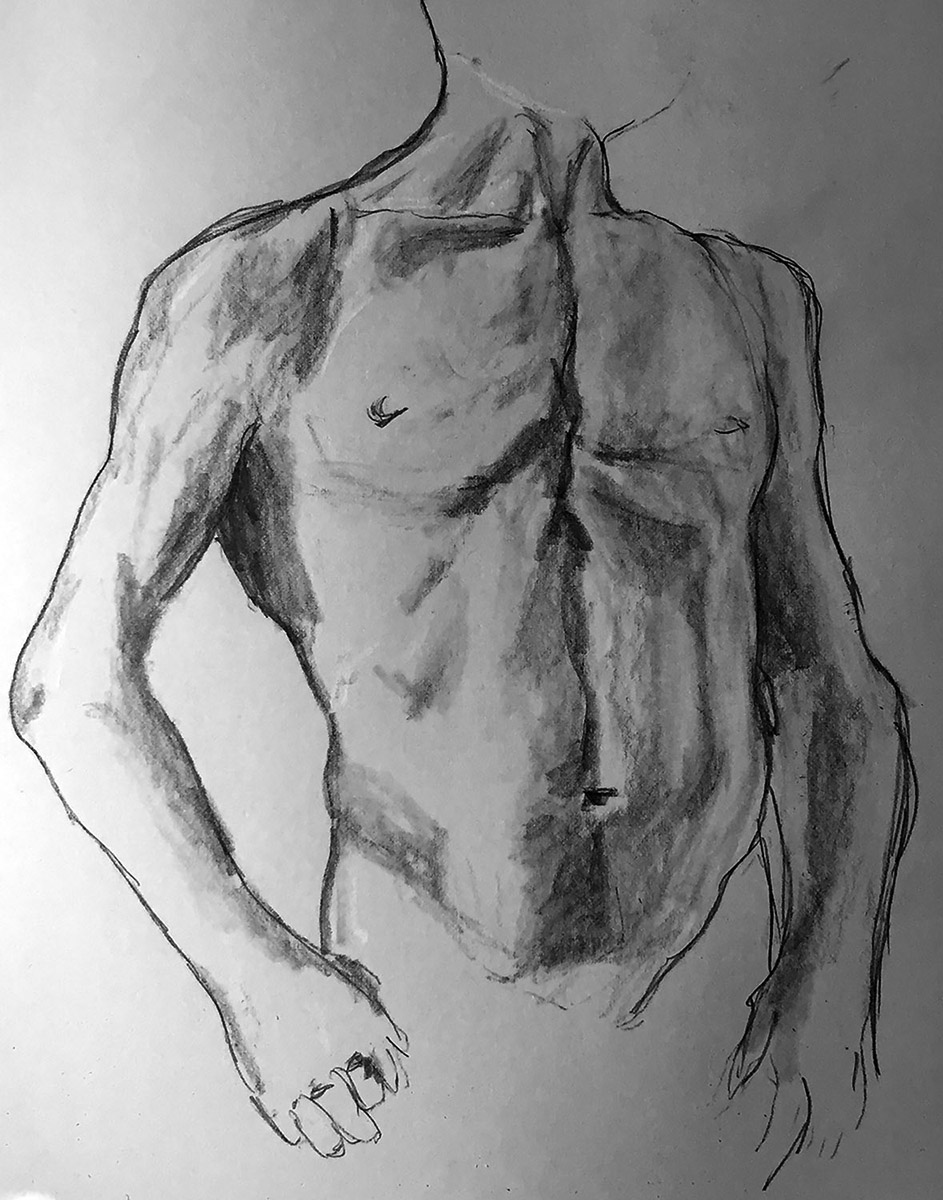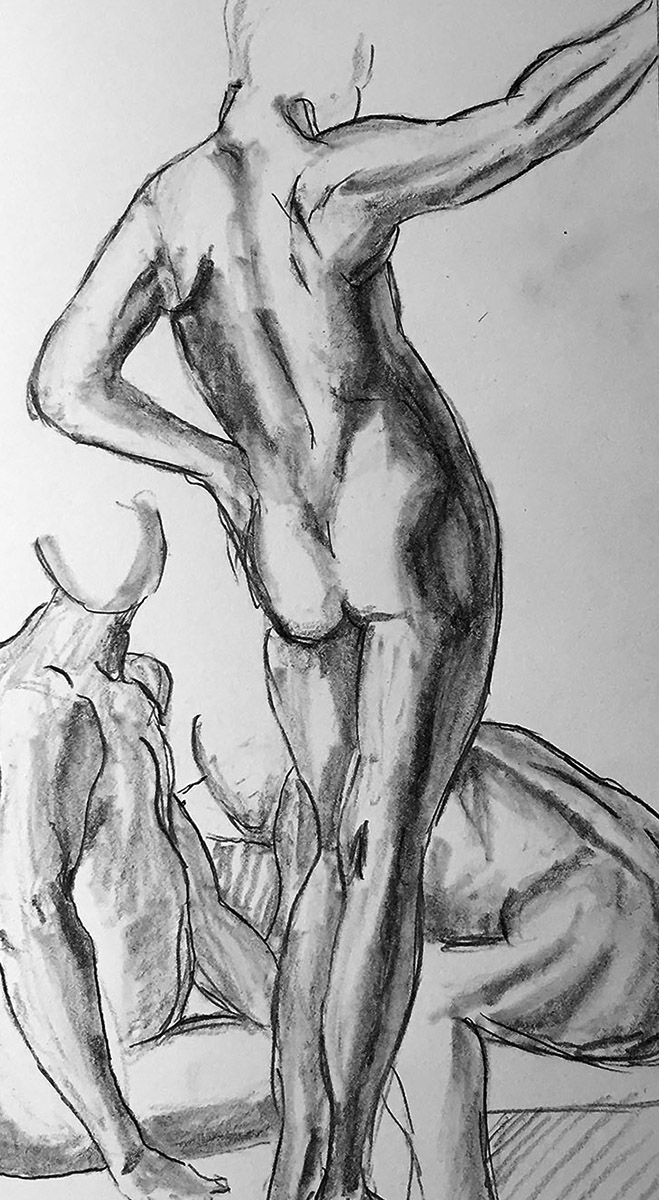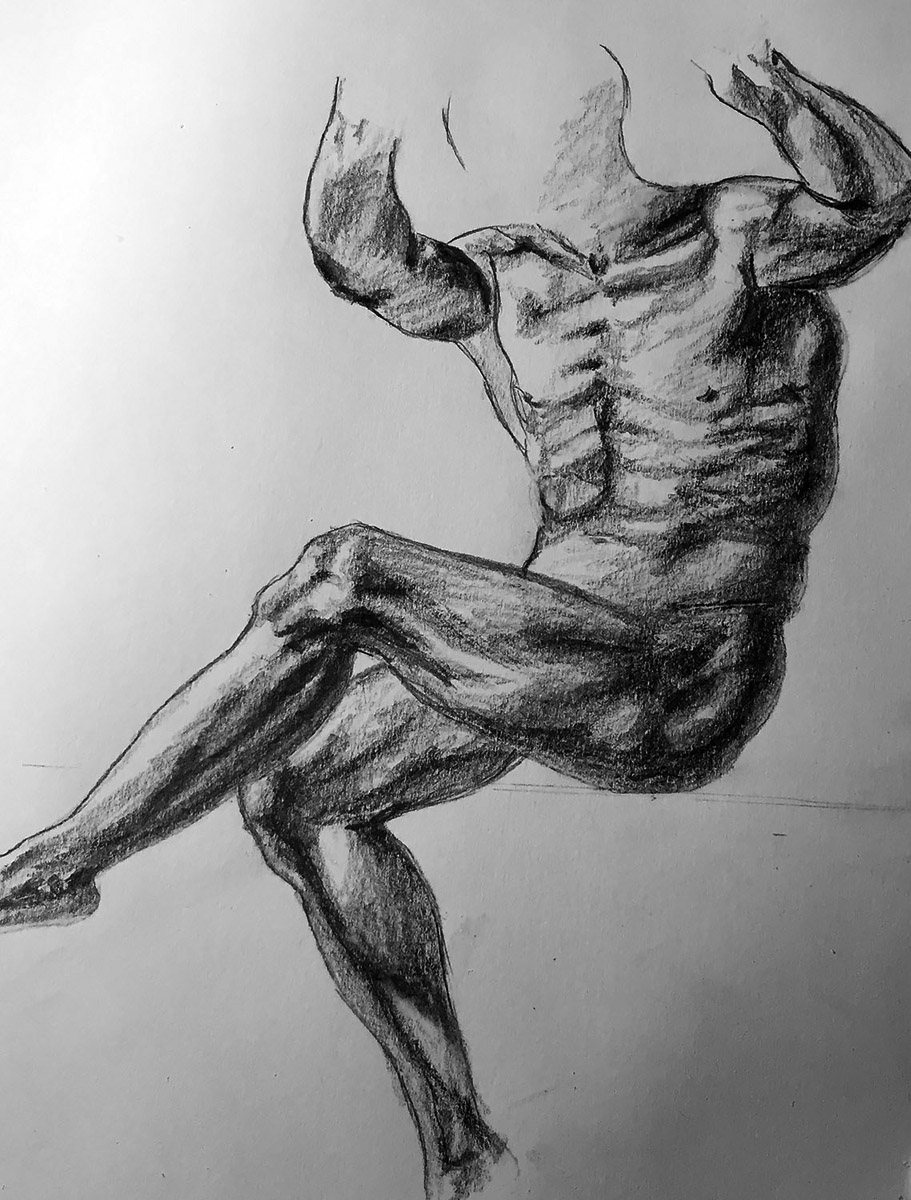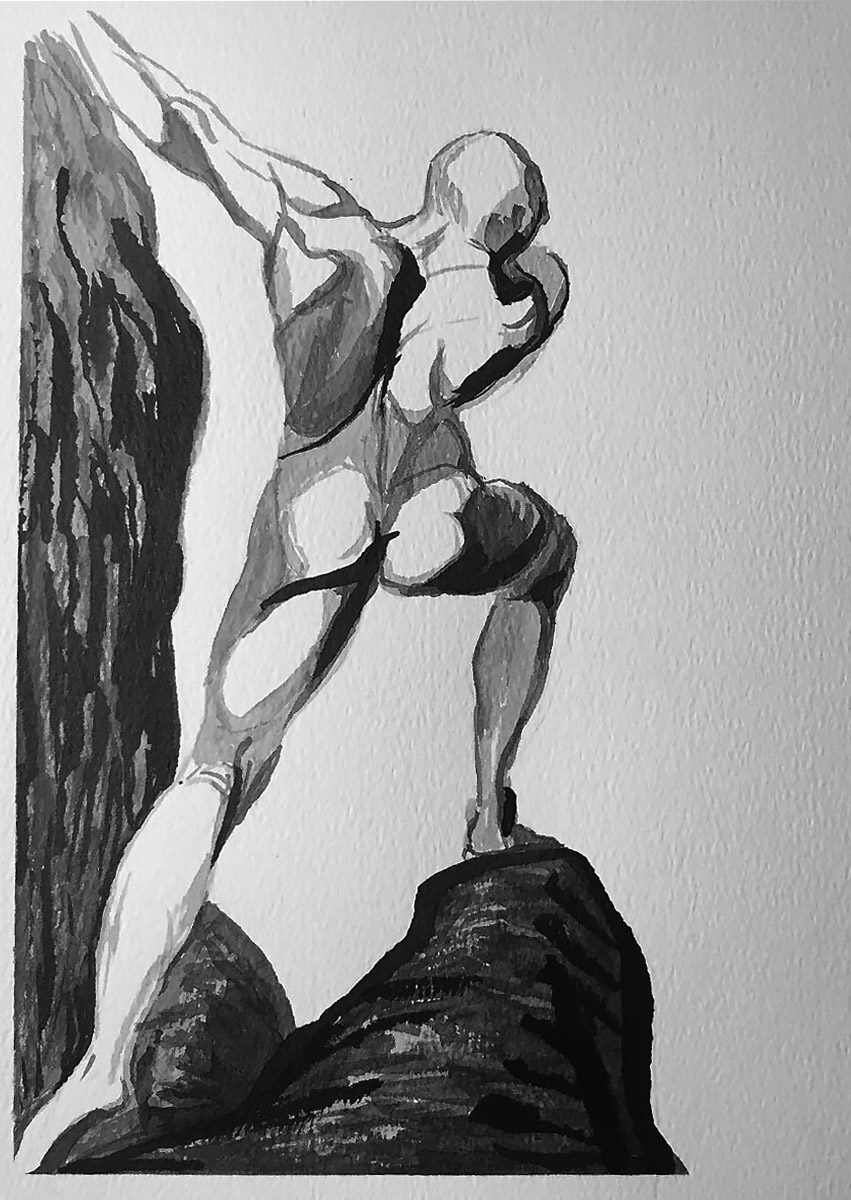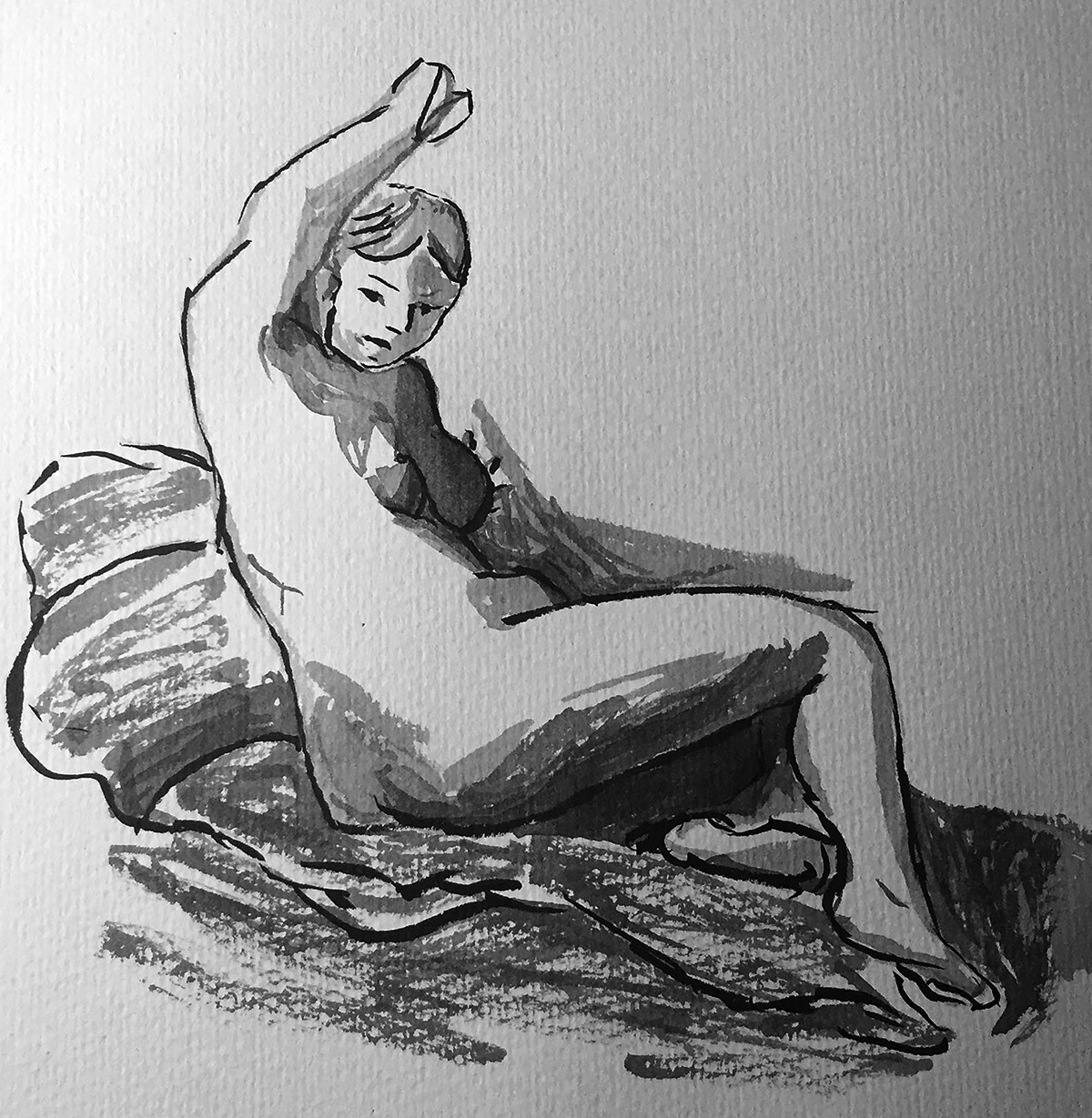
As I have mentioned earlier posts, I have been in the process of copying old master drawings from a book entitled “Anatomy Lessons by the Great Masters” by Robert Beverly Hale. The India ink drawing above is a copy of a work done in pen and wash by Rembrandt van Rijn. When I went to find information on the original drawing, I discovered that Rembrandt did not draw it. It had been reattributed to another Dutch painter named Aert de Gelder. You are probably asking yourself, who is this person named Rembrandt? Believe it or not, there is a lot of information on him everywhere in the form of articles, books, movies, etc. A much better question would be: who is this guy named Aert de Gelder? Let’s find out together. The following information is taken from the Thyssen-Bornemisza National Museum in Madrid, Spain. On their website it states that it is in fact ‘Everyone’s Museum’. So, in the interest of inclusivity we will rely on their information.
There isn’t a lot written about Aert de Gelder.
He began his training as an artist in his hometown of Dordrecht, Holland. In 1661, he moved to Amsterdam to complete his training in Rembrandt’s studio. Aert de Gelder was considered Rembrandt’s best and closest follower. De Gelder uses broad brushstrokes that are heavily pigmented, and he often applies the pigment with a spatula or his fingers. By using the other end of the brush, the artist could also create effects by scratching into the wet paint. The most distinctive aspect of De Gelder’s style was his use of color, especially from the start of the 18th century onwards, when he began to add whites, yellows, blues, greens, violets, and oranges. Like the color orange, not the actual fruit. Although maybe he did attach fruit to his paintings. There isn’t a lot written about Aert de Gelder.

